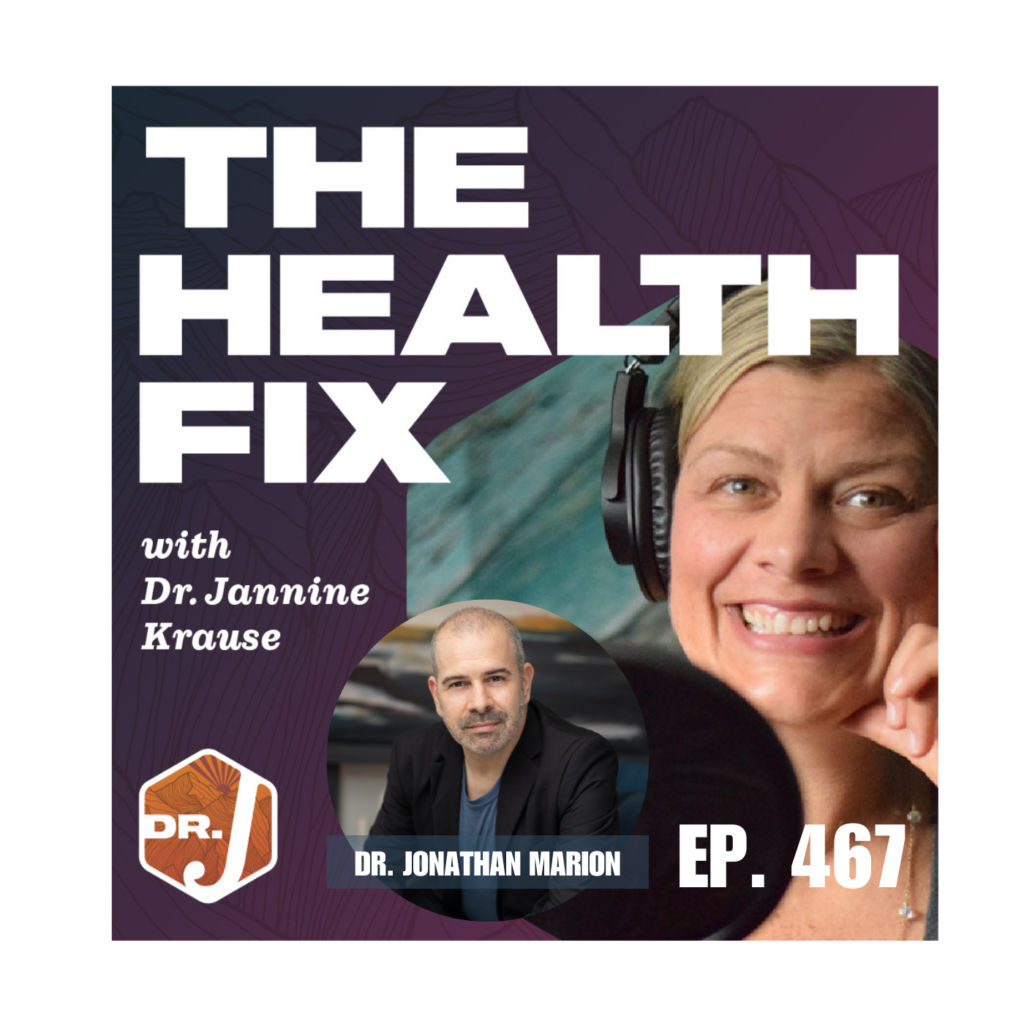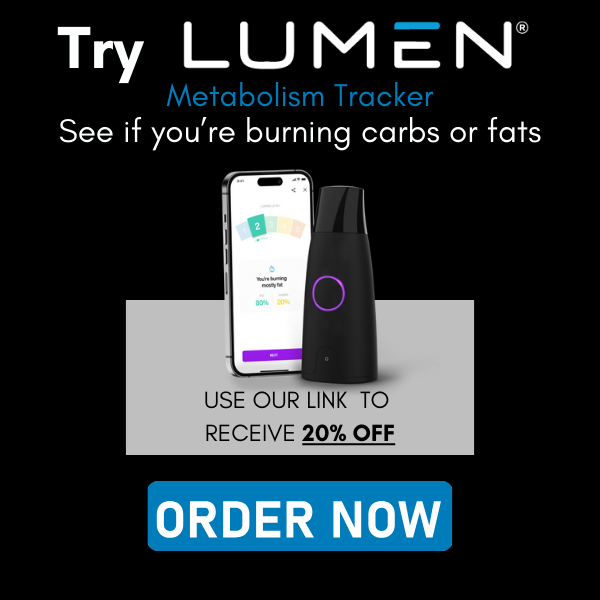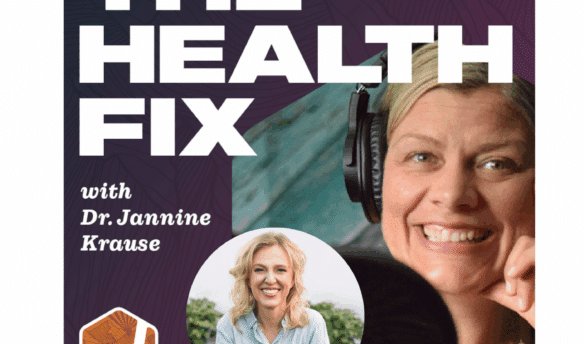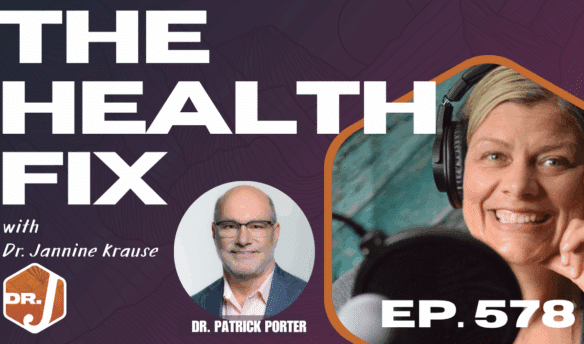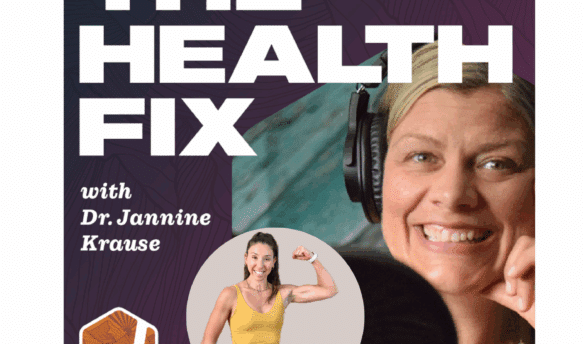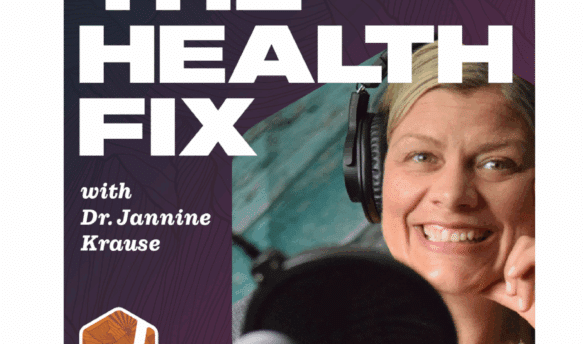Elevated cortisol and heightened stress responses are often a result of mis-guided insecurities. Your fight or flight, vagus nerve responses are deeply tied into how you respond to stress and what you’ve learned do to feel safe and secure. Being aware of how insecurities show up in situations as well as relationships with yourself and others is a crucial component of stress reduction. This episode of The Health Fix is the first podcast of a two part interview series with cultural anthropologist, author, speaker and somatic Jonathan Marion. If that name sounds familiar – that’s because he was on the podcast – Ep 456 where we talked about being present in your life. This podcast series is a great follow up from episode 466 with Alicia Kay where we talk about stories you tell yourself to keep you safe. In this episode Dr. Jonathan Marion and I take a look at how the primal nervous system’s mission to keep you safe shows up in relationships with insecurities and attachment styles causing stress.
Dr. Krause’s Protocols
Instructions Included
Traveling soon? Looking to detox or reset your gut? Try one of Dr. Krause’s Fullscript plans.
What You’ll Learn In This Episode:
- Characteristics of the 3 attachment styles
- Relationship drama provoked by insecurities
- Identifying insecurities in what makes you feel safe and secure
- The nervous system connection to seeking comfort and fulfilling your needs

Resources From The Show:
Our Partners
Podcast Transcript
2:55 – Looking at your life externally, not internally
4:24 – Relationship dynamics causing stress
5:11 – “Should is fighting with what is”
5:45 – Attachment theory and attachment styles
7:10 – Anxious attachment
7:51 – Avoidant attachment
8:15 – Anxious Avoident
8:33 – Earned secure attachment
11:43 – Most common attachment styles
15:17 – Differentiating between someone who is taking advantage of a situation and someone is anxious
17:16 – More on avoidant attachment
22:00 – Some things you can do if you suspect you have an attachment
25:55 – Falling prey to ideas of what social norms are
27:24 – Patient – doctor attachment
34:34 – Things you can do to help if you suspect someone in your life may have an attachment
36:40 -Showing up for your children to give security when your life may not be perfect
[Intro] Hey, Health Fix junkies.
It’s Theresa Lear-Levine from Becoming More Me, the podcast for Busy-Minded Entrepreneurs
that want to be more and do less.
Blessed to have appeared on not just one but three episodes of the health fix, so I encourage
you to check out episode 445, 411, and 322 of the Health Fix podcast where I talk about
breaking up with your old self self sabotage, fears and thriving through life’s changes.
Mm. Perry Metapause using EFT tapping and hypnotherapy. You’re listening to the health
fix podcast. Here’s your amazing host, Dr. Jannine Krause.
JANNINE: Hey health junkies. This episode of the Health Fix Podcast kicks off a two-part interview series
with Jonathan Marion. If that name sounds familiar, that’s because he was on the podcast episode
456, where we talk to all about being present in your life.
Jonathan Marion is a cultural anthropologist, author, speaker, and health coach with a widely
diverse base of knowledge.
In part one of this two-part series, we’re going to talk about insecurities and attachment
styles and their impact on your relationships and stress levels.
In part 2, we’ll be talking about the art of relating to others and navigating rejection.
I’ve been diving into the nervous system a lot lately, especially the vagus nerve, and
it’s clear to me that to optimize your health, it’s crucial to assess your relationship
with yourself and others, as these are often the areas of hidden threats to your nervous
system that can potentially hinder your health and growth personally.
So lots of good nuggets in this podcast.
Let’s introduce you or reintroduce you to Jonathan Marion.
Hey, Health
So Jonathan, thanks for coming back on to chat with me.
JONATHAN: Absolutely my pleasure to be back on Jannine and delighted to continue our conversation.
JANNINE: Yeah, so at the end of our last podcast, we were starting to talk about relationships,
consciousness and how all that ties in and you had mentioned attachment styles.
And this is something that, you know, I’m, I’ve heard of it, right?
But I’m not super familiar.
I’ve never talked about it on the podcast.
And since we’ve, you know, had a little time between this podcast and the last, I was thinking
But I’m like, you know, the number one thing second to people telling me they’re tired is that when I ask them, are they stressed?
They’re like, my life’s great.
They’re looking externally, right?
They’re like, everything’s great there.
And then they’re like, but maybe there’s something internally or maybe there’s a relationship issue going on or communication issue.
So I was like, oh, today’s a perfect day to talk.
Do you seem to see that too in the universe in which you’re working with folks where they’re looking externally,
but not quite internally on how these relationships cause some strife for them?
JONATHAN: Yeah, I think that’s absolutely on point.
And so obviously there are people who are dissatisfied because the external measures aren’t what they want.
And that’s one thing.
But then what you’re bringing up right now is sometimes the external really are sort of in alignment.
And then people get confused or go, “Wait a minute, the things I was aiming for, I do have.”
But somehow it’s not as meaningful, fulfilling, satisfying as I thought.
And that’s usually because of those internal relational types of dynamics.
JANNINE: Yes.
Yes.
And I think a lot of us, I mean myself included, I never really thought about how certain
relationship dynamics could really cause a huge amount of stress, even though you love the person,
but you’re like, huh, every time they say that, or every time this happens, I am a wreck. Let’s
go into that a little bit. I’m sure you probably lost your smiling. So I’m sure you’ve heard lots
of different versions of that.
JONATHAN: Sure. So one of the things that we had spoken about last time
and that I think is applicable here is so often we have these ideas of the way things should be.
And sometimes those are sort of overt expectations and we can voice them. At the same time, there’s
often these deeply internalized frameworks and models that we don’t even realize that we are
are holding subconsciously.
If someone loves me, they should be expressing it
in this way.
If we have a healthy relationship, it should work like this.
And as I had voiced last time,
should is fighting with what is.
And so I think a lot of the times,
one of the causes of strife is that we have expectations
that we don’t even realize we have.
And so it’s not that there’s even necessarily anything
wrong or unhealthy, but there’s a mismatch between an expectation that we don’t even realize we have
and how things are really playing out.
JANNINE: Okay. And I can see where we can get attached
to that expectation. Now, is this where attachment styles kind of start to come into play?
JONATHAN: I think it overlaps. So attachment theory, the way it’s commonly thought about is,
It sort of stems out of psychoanalytic theory back in the 50s with Balbee and Ainsley. And then
later there were some, sorry, Ainsworth, Balbee and Ainsworth. And then later Harlow did some
experiments, you know, with even monkeys and using baby monkeys in a wireframe, one wrapped with
with terry cloth one without and with like bottles.
And part of what emerged in the research
was that there’s not just physical care,
such as a bottle with milk, but there’s emotional care
and what’s actually comforting.
And so the model, and there’s some sub-variance of it now,
but the model of attachment styles and attachment theory
is that there is the possibility of secure attachment.
So this starts in infancy,
but it’s this idea of sure,
an infants introduced to a new situation
and maybe a little unsettling,
but they’re very quickly comforted when,
they find whether it’s mother, parental, trusted figure,
and they’re just secure.
So yeah, it’s a little unsettling,
but they’re secure and they settle down very easily.
There’s also what is then looked at and termed
as anxious attachment.
And that’s when we’re sort of anxious about whether
we’re gonna have that comfort or not.
And what happens with a lot of that dynamic as we get older,
if we don’t realize it,
is it’s the, you feel close to someone,
but you’re always wanting reassurance.
You’re always trying to get them to signal back
because you’re anxious about how stable is that attachment?
There’s also avoidant, which is you’ve sort of probably very early on.
And a lot of this imprints, you know, pre-verbally as infants.
With avoidant, it’s we learned that we can’t count on someone, a caregiver actually coming
to our emotional rescue.
And so we stop even reaching out.
And so then later in life, these are the people who don’t put themselves out there because
they know that they can’t count on anyone meeting them there.
And there’s then also sort of sometimes referred to as anxious, avoidant or disorganized where
it’s features of both of those anxious and avoidant because the as a child as an infant,
you never actually learned one strategy because it was too unpredictable.
The one thing I want to say is all the research backs up that even though that’s where we all start, everyone can learn earned secure attachment.
So even if you didn’t grow up with secure attachment, we can learn that it can be earned in how we relate to people.
So I just want to put that out there before we go further so that no one gets it in their head of, you know, oh crap, I’m screwed.
We can all learn earned secure attachment as we learn how to have relationships with people who can meet us where we need to be met.
JANNINE: That’s I mean I’m glad you mentioned that because you’ve probably heard of people doing the like love languages.
Um assessments and then the anagram you know how we say that I think it’s right.
I don’t know.
You know all these assessments, right?
And then you see these assessments and you’re like,
that’s me for life, right?
We start to think like, oh, crap.
Like my love language, can I change it?
I don’t know.
So I’m guessing there’s some overlap with attachments
and love languages and all how those things play
in too as we’re looking through them.
JONATHAN: So to the best of my understanding,
there isn’t a correlation per se, but where it does overlap is that the idea of attachment
style is, you know, how do we actually have these secure emotional bonds? Well, if someone
is trying to love you, but using a vector, one of the love languages, which isn’t what
resonates for you, then they may love you a lot.
And they may be trying to express it a lot,
but it’s never going to land because it’s not in the way
that you need to receive love.
And I think one of the mistakes that too many people
make with the idea of the love languages
is looking at it as, oh, this is what I need and stopping
there.
It’s a great thing.
It’s important to be able to say to someone else,
this is what’s going to register for me.
But part of the point is we also want to relate to other people.
It needs to be relational.
It’s not just taking from people.
And so if we’re familiar with love languages,
it’s not these are my love languages.
And therefore, that’s what I’m going to give someone else.
No, these are my love languages.
That’s what I need to receive.
But I need to find out what their love languages are.
And even though it may not come naturally to me,
express it in the way that’s going to register for them.
JANNINE: OK.
OK.
And so of course guys, I diverted us a little bit to love languages because in my head,
I’m like, love languages, attachment are these things, you know, connected.
So, okay.
So we can rewire ourselves when it comes to attachments and, and these attachment hang
ups.
How, how does this show up?
Let’s, let’s talk a little bit about how it shows up.
Cause I think for a lot of people that might be thinking like, do I have an
attachment thing going on that I need to work with?
Let’s, let’s talk about those.
What are the most common ones?
JONATHAN: Yeah, so again, if someone has secure attachment,
then they have a real gift from whoever brought them up
and raised them.
And they learned that they can count on other people
and they’re probably doing fine.
And it’s not to say that they don’t have ups and down
in their relationships, we all do,
but they don’t have an underlying pattern
that’s getting in the way.
For people who have anxious attachments,
And I’ll just be transparent upfront.
I actually had the most maladaptive one
as far as my upbringing.
So anxious, avoidant, or disorganized.
So I’m speaking from both sides of that.
So with the anxious part, it’s whenever you do feel close,
there’s somehow a distrust that it’ll remain.
And it’s not necessarily a distrust of the other person.
Oftentimes it might be a distrust even that you feel worthy.
And so you keep reaching out for reassurance.
And that can be really maladaptive
because someone else may feel like,
“Look, I’m meeting where you are.”
And you keep needing more and more and more reassurance.
And so sometimes this could come across as very needy.
And I know back in 2019,
when I had the bad spinal injury and was laid up,
one of the newer friends I had met earlier
that year when I was down in Brazil, you know, I was reaching out to and I didn’t realize
I was overdoing it.
But I was in a place where I was really needy because like life was really sort of tumultuous
and I was needing all this reassurance.
And I eventually got a message from them, an email just basically saying, “Look, I’m
not discounting like the friendship we’ve had, but I’m not able to provide what you clearly
looking for in this friendship right now and I’m out. That was a tough pill to swallow, but
in the long run, I really thank them for having been that transparent. They didn’t just sort of
ghost me. They didn’t, you know, sort of make up something else. They said what it was, and it
could really bring it to my mind, and I could really think through, okay, what’s going on from my end.
And of course, that is going to be overwhelming.
We’ve all interacted with people who you give them some and they keep wanting more and more.
I think it’s really important to differentiate between who are people who are just trying to
take advantage of us versus people who, it’s not to say give more than you’re comfortable giving,
but there’s a difference between an intentional action trying to take advantage versus people who
just really become draining. And for our own sake, we need to, you know, have some boundaries
and pull back. But so that’s where anxious can really get in the way, because you keep
needing these reassurances. And sometimes you’re asking for more than someone’s comfortable
giving and you don’t even realize that’s what you’re doing. And so in asking for more and
more reassurance in different ways, you actually push them further away.
JANNINE: I can see that.
I can see that.
I mean, I definitely, you know, with the patient doctor relationship, you know, sometimes
I can see that too.
And yes, that differentiation is like, are they trying to push the limits or do they,
you know, what’s going on here?
How would someone differentiate really between someone taking advantage of the situation and
someone more just like they’re anxious?
really are anxious and have that attachment.
JONATHAN: Yeah, so I think that as we mentioned last time, like there is no the right answer to anything.
But for the most part, if we really tune into who is this person, where are they coming from,
why is this important to them? Is it that they’re trying to take or is it that they need?
right? So are they trying to sort of leverage so that they have more from you or is it that
they’re actually something as empty for them versus they’re just trying to accumulate? And you
know, are we going to get it right all the time? No, we’re human. But I think if I can step back
far enough to not be like, this is draining, but to really look, and like, where is this person
coming from, then oftentimes I can tell the difference between someone who clearly there’s
some underlying insecurity versus someone who’s trying to play me.
JANNINE: Sure. Sure. I mean, I think a lot of it has to do with context too. I would assume in terms of
the context in which you meet someone, the context in which you could see what is going on. Let’s
say that. Now, with attachments, of course, you know, we’re talking relationships and
relationships don’t have to necessarily just be a intimate type of relationship. We can
talk like you were saying friends, but also business relationships. I find that a lot of
business relationships can become strained because of different attachment issues as well.
What have you seen across the board in terms of folks you’ve worked with?
JONATHAN: Yeah, so if I could, I wanna rewind
and also talk about the avoidant attachment
and then we come back to this
because I think we need to look at both of those
to really answer.
So we were talking about the anxious one.
The avoidant one is someone who at some point
internalize this idea that they can’t count on other people.
And so they never reach out for help
because the underlying unconscious idea is,
if I do, I’ll be disappointed.
And if I don’t think it’s a conscious realization,
but the underlying logic is, if I don’t ask,
I can’t be turned down.
No one there can’t say no if they’re not given
an opportunity to.
And so you’re avoiding that pain,
emotional pain of being let down.
And obviously at a certain stage, that was a strategy
that was more comforting or caused less pain than the other.
And we don’t really adjust it when we get older
until we really do the work and think it through.
And so where this shows up later are people who are like,
“I don’t need anyone.
“I’m not gonna, I don’t wanna work with other people.
I’m not going to ask that person out on a date because, you know, they’re going to make up a
reason why, but underlying it is, you know, they find it so painful to be, have a no to not be met
where they are that, you know, they’ve learned to just not even ask.
So yeah. So now let’s come back to that question about in different types of relationships.
So I think one of the really important things that I think has overlooked is that if we’re
really talking about lived experience, there actually isn’t such a thing as a relationship.
And what I mean by that is it’s not a thing.
It’s not out there.
It’s not separate from the people involved.
There’s relating.
It’s an ongoing process.
And I think it tends to be unintentionally, but often in a way that becomes at least somewhat
dysfunctional a cop-out to say, “I’m doing this for the sake of the relationship.”
Well, what does that mean?
If it’s really about what we’re labeling as a relationship, it really should be about
relating with another person or other people.
What is in the service of relating is a very different framework than what’s in the service
of the relationship as if it’s one static thing.
[Advertisement] Hey, Health junkies.
Wanted to tell you about my pal Dr. Annamarie Frank’s supplement line that specifically
targets the needs of women from anxiety to depression to getting focused and balancing
those hormones as well as helping with sleep she’s got you covered.
Plus she has T’s too.
At this day and age, it’s hard to know what supplement companies are up to when it comes
to sourcing and quality.
That’s why I love to get to know company owners.
Dr. Annamarie has created formulas that combine what I would do if I owned a supplement in
tea company.
So, wanted to tell you about them.
As a listener of the Health Fix podcast, you can get 10% off your order by using the
code DRJKRAUSCE when you head to happyholue.com.
Now say you’re driving or out on an adventure and you’re not going to remember where to
find this website.
That’s okay.
My favorite products are all on my website at drjcrousend.com.
Just click on shop and you’ll find everything I stand behind and use myself right there.
So let’s get back to the podcast.
JANNINE: That makes sense.
That makes sense.
I, you know, I think thinking through all these different types of interactions, let’s
put it that way, can sometimes be overwhelming for a human just in general,
general, that kind of figure out, you know, how am I playing into this?
Am I showing up as me?
Am I showing up with attachments?
Am I showing up?
What does someone do?
If, you know, I guess it’s probably at this point where I’m like, well,
what do you do if you suspect you have one or you’re, you know, showing up that
way?
What are, what are some signs?
What are some, um, you know, I think we’ve talked about signs, but what are
like some things that folks can start doing to get into the rewiring process.
JONATHAN: Yeah, I think that’s so important. And so, again, we all have neuroplasticity. We all can
learn new patterns. The fact that we all have sort of an underlying, you know, default wherever
we’re starting from. Yeah, it’s real. But it doesn’t mean that we have to act on it. So,
For example, I was aware of the fact that I had the anxious part since for quite a while. I didn’t
realize till later I also had the avoidant, but with the anxious, if there was someone who
whether a friend, a potential romantic interest, whatever it was, who I would reach out to,
and if I didn’t hear back from them within a certain time frame,
my natural inclination was to send another message or to send another message or to send
another message, you know, and keep like sort of trying to get engagement. But once I realized
where that was coming from, sure, that might still be the default inclination, but I don’t have to
act on it. I can sort of back off and whether just in my own head, whether talking to friends and
family, whether talking to a coach, whether working with a therapist or a healer from whatever
tradition I believe in, I can start to go wait a minute. What would be a reasonable amount of time
to wait for a response before I try engaging again.
And so what, about two years ago, a year and a half ago,
I would have had something like this.
I was in Ireland at the time,
and my natural inclination was,
“No, I need to send another message,
and I haven’t heard from this person.
I need to know what’s going on.”
And it was like, “No, what’s reasonable here
is to wait two weeks and see.”
And sure enough, like about a day before the two weeks was going to be over, I got a message saying,
so sorry for not having been in touch.
I got COVID.
I’m just recovering.
But I do hope to catch up with you when I’m fully recovered.
What would it have come across like if this person is sick, you know, having trouble like breathing and going about their daily life.
And yet they’re getting message after message, basically asking for a response.
And so sure, the inclination may be there and we may not be able to rewire that, you know, at the
click of a button. But if we can recognize where it’s coming from, and then step, put that to the
side and say, okay, step by step, what actually makes sense here, what’s giving them a chance.
Now they can meet you. And yeah, you may need some support to process whatever is coming up,
because yeah, you get anxious.
There’s some stress.
There’s some insecurity, but we’re human.
That’s part of being human.
JANNINE: Absolutely, absolutely.
This brings up for me.
Folks might laugh at this.
It’s like the customary you go on a date with someone
and then there’s like three days before you contact them.
That’s like, you know, the customary wait period.
And if someone, you know, hits you up before that,
there’s this like, oh, they must really like me kind of thing.
And so I’m getting into this in my head only because I’m like, how?
How do you go across what you have in your head about what’s customary and what’s like in your head?
Is this in? How do you weed that out between am I, am I avoidant? Am I, am I consciously doing
this because I’ve been trained that I need to wait three days? I think the only reason I’m saying
is because it’s like, I hear this from my friends who are single all the time. They’re like,
like, “Yep, there’s that three-day rule.”
And I’m like, “Okay, is this an attachment thing?
Is this a customary?
What are we doing here psychologically?
What’s happening with this three-day rule?”
JONATHAN: Yeah, I don’t think that on its own,
that is attachment style,
’cause when you’re just talking about
like an initial date or two,
it’s not yet at that level, usually.
That said, I do think there’s an element of it
because they’re the people who are gonna go,
wait a minute, I thought it went great
and I haven’t heard from them for a few days.
You know, are they not interested?
You’re also gonna have the people who go,
well, they responded that quick, are they desperate?
And so I think this is where we’re falling prey
to just our ideas about what social norms are.
And to me, if it’s really about relating to people
authentically and connecting authentically,
then my take is if you wanna get in touch
with someone sooner, just say, look,
I don’t know if this is one of those things
where I’m supposed to wait X amount of time,
but I really enjoyed our time
and I’d like to get together again
or have another conversation.
And so acknowledge that there are these
bizarre social considerations
and that we don’t quite know where they come from
or what they’re supposed to signal.
But just be authentic about how you thought it went.
JANNINE: Yeah, I like that.
I like that, just be real.
And make fun of the social norm
if it helps you feel better about things.
But okay, ’cause I’m trying to think
of what folks might be asking me about attachment styles.
And of course, going from relationship
but to your doctor-patient relationship too.
This is a big one where these show up.
So I’d love to hear your take on these.
JONATHAN: Yeah, so I think one of the places where I see
some corollaries is actually with avoidance.
And so the people who’ve learned
that they can’t count on others
and that they need to sort of do it themselves,
well, I think that at some level,
there’s a cultural version of that where not everyone,
everyone’s an individual, but by and large,
men have been socialized more to need to, you know,
sort of, quote, “buck up,” and, you know, therefore they don’t actually seek help, seek
medical advice, go in for something, and it’s related.
It’s part of why men have, you know, the stress levels, and probably it’s related to, you know,
younger mortality, on average.
And as far as attachment styles, it comes from attachment styles.
This isn’t necessary about attachments to a physician, a doctor, but it’s like, how do
we learn to seek comfort?
And so I know in late 2019, when I had the spinal injury and the nerve damage and couldn’t
even roll over for five weeks, you know, my inclination is not to reach out to people.
And I really had to say, this isn’t going to work.
I literally cannot even roll over, let alone take care of myself.
And so I had to put it on my socials, anyone who’s local to the area and can come help
out for 10, 15 minutes a day.
I need you to refill my water bottle, mix me a protein shake, and empty a portable urinal.
I cannot move.
I cannot roll on a side.
And yes, there were people who I thought were going to be there and didn’t show up.
And that was disappointing.
At the same time, there were people who came out of the woodwork who I would not have predicted
in a hundred guesses, a thousand guesses.
And I think that’s the thing that when we’re coming from an avoidant place, we need to
realize is sometimes our needs will get met by people we wouldn’t expect and in ways we
wouldn’t expect and that we’ve cut off the possibility of that if we never outgrow that
pattern.
Basically anytime you don’t ask, the answer is no.
JANNINE: Mm hmm.
Mm hmm.
Yeah.
Yeah.
That’s a fun one I learned from my mom years ago.
And it’s a completely different context.
But the answer is no if you don’t ask.
And that’s important to think about, because I think for a lot of people who have the style
of avoidance, I can see where a lot of folks will get stressed because they don’t have
help.
And then I’m like, “Well, did you ask anyone?”
No.
So it comes down to that too.
Now with working culturally, because I, of course, as I mentioned, the first podcast
that’s fascinated with cultural anthropology
and how attachment styles like go across culture.
Obviously there’s three styles for a reason.
We all kind of have independent of our culture.
Are there interesting twists that you’ve noticed
in the different countries you’ve lived in,
the different folks you’ve worked with
in terms of cultural styles with attachment
and how it shows up?
JONATHAN: Yeah, so I think that’s such a compelling question
and I haven’t done the research on it
that said, my background, my PhD is actually in psychological anthropology, which is about
that permeable border between personality and culture.
And where I think this overlaps the most is that what counts as a display of care, what
counts as meeting needs is very cultural.
And so in all cases, it’s what we very early on imprint and learn, you know, do our needs
get taken care of? Do they not get taken care of? Do we learn that they won’t be taken care
of no matter what? And therefore, we become avoidant. Do we learn that we really need
to cling? And that’s how we can sort of get a little more attention than we feel because
we’re insecure. But what counts as meeting those things? That’s very culturally variable.
And so, you know, one of the things that becomes very interesting is we learn how things are
quote supposed to be.
Again, it’s those shoulds.
And so you can grow up in places where there were very different expectations of the roles
of each of the parents.
And whereas in our culture, we might say, look, some of why someone, you know, isn’t adapted
the way we think they should be is because, you know, the parental roles weren’t filled.
Well, that’s just not true because if you don’t have an expectation of that’s how those
roles get filled. If they get filled in a different way and you learn that’s normal,
that counts just as much. It doesn’t have to be any one way. And so that’s where I think there’s
a huge cultural overlay because do we have as parents expectations of how these things should work
of how we should be interacting with or without another parental figure,
or even parental figures and more blended families. And outside of modern Western society,
most child rearing isn’t in a nuclear family. It’s much more communal. And so it’s actually
very unnatural for it to be so such a small unit. And so it’s probably exacerbated within the
the context that those of us, especially in the US, North America, the West have grown
up in, where it’s much less communal effort and rearing of children, where we have much
more neo-locality of parents and kids living in a different location than extended family.
Because if you’re living in an environment where there’s many more adult caregivers are
as part of your day-to-day circle, you have a better odd of actually getting some, you
know, attachment needs met very early on.
And so that’s probably much more adaptive in the longer.
JANNINE: Interesting concept, because I was thinking while you’re talking about, you know, folks
who have more parental care, especially in the Latino populations, you know, lived in
Mexico for over a year and just saw like, you know, you’ve got your mom, but your aunt,
your grandma, like everybody’s all around, tend to be all in the same block, right?
And so you’re bouncing around between all of them at any given time.
And so we can see how that would be more of an adaptive kind of response to things of
that nature.
So maybe if some folks are listening right now and they’ve got some kids or grandkids,
is there any advice that you would give in terms of helping support attachment, you know,
types of styles and relationships?
What kind of things could folks do in that case?
JONATHAN: Yeah, I think there’s a couple of things.
The first is any time,
’cause where is it the hardest to express, you know,
love and affection?
It’s like when we’re stressed out,
when we’re, you know, at Wits End.
And so if rather than looking at any type of behavior
as acting up, acting out, trouble making,
we look at it as this is a signal
that they need attachment and they need security.
That’s because they just don’t have the framework,
they don’t have the vocabulary,
they don’t have the emotional awareness to say,
I’m feeling unattached, I’m feeling insecure.
And so all of those are basically just a cry, a plea
for I need to feel more securely attached.
We need to start there.
And I think we can then sort of go, okay,
what’s actually going on,
how can I meet the emotional need first,
then we can turn to whatever the behavioral issue is
and help train our children
with more emotional intelligence
and better coping strategies than we grew up with.
The second piece of that is it can be really taxing.
And so you need supports as well.
And so you need to build what’s your safety net,
what’s your support network?
Because it’s really tough.
And it’s not just a matter of switching something in your head.
When a kid is screaming nonstop,
and no matter what you do is wrong,
that’s tiring, that’s stressful.
So what are your resources?
And what are resources that you can bring in
as far as other secure figures if that’s possible?
And what are the things that you can use
as outlets and as supports for yourself?
This isn’t the same thing, but I think it’s an important side point here, which is the
biggest gift that we can give children is breaking cycles of this.
And I have one friend who is just, she blows me away when I watch what she’s doing because
She left a very abusive situation and setting, doesn’t have support, has to actually be, you know, has a legal case going on right now.
But I didn’t even need to see it, but just even seeing how she posts about her daughter and what she shares.
That kid is so securely attached, it’s absurd.
And when I actually mention this to my friend,
they’re like, I feel so seen,
I didn’t even realize other people noticed it,
but yeah, she’s super secure.
And this isn’t what my friend grew up with.
But, you know, she’s made it a priority to say,
the most important thing I can do is make sure
that this child feels secure.
And even though her own environment is anything but,
And again, she’s dealing with legal, financial, all of that.
We don’t need to, it is part of what our life is,
but how much can we insulate our kids from that?
How much can we show up to them with your cared for, your loved,
your taken care of, and then fine, break down if you need to,
but find where and how to do it in a way that doesn’t take away
from the security of our children?
JANNINE: That’s huge, that’s huge.
‘Cause I think right now what we’re seeing so much of
is a lot of parents who are going,
oh gosh, what have I done?
The rethinking like, how do I change these things?
How do I rewire myself?
But how do I also help my kids to rewire
from what’s happening?
And I think this is a big stressor
for a lot of people.
JONATHAN: Yeah, I think the most important first step there
is self-compassion.
No matter who you are who’s listening to this,
you’ve done the best you could until now.
If you knew better or had more resources before,
you would have done something different.
So this is not about self-recrimination.
This is not about you’ve done anything wrong.
You did the best you could,
And that’s the best any of us can.
But with a new awareness, what can you do now?
And depending on the age of your child or children,
have a conversation, say, look, I recognize
that maybe this didn’t come across the way I intended it.
How did that feel?
How did that make you feel?
What would work better?
What can we do as a family?
or as parent child to have a healthier,
more adaptive pattern going forward.
Again, it’s about relating.
It’s not there’s a relationship
and it’s a thing that’s fixed forever.
It’s relating, it’s organic, it’s living, it changes.
JANNINE: Interesting concept,
’cause I think a lot of us don’t think about
relating versus relationship.
That’s a profound difference in at least in my brain, too,
to be able to converse with someone, right?
Or to be able to dialogue, I guess, in general,
converse dialogue and have that.
And perhaps maybe that’s where some of the rewiring
comes into play for us adults on our own levels.
[Outro] And with that deep thought,
we’re gonna hold off ’til next episode
to talk about relating.
and how relating plays into relationships,
whether it’s business, personal friendships,
and how we perceive our relating to others.
Fascinating stuff here.
Next podcast will also dive into rejection
and how that plays into stress
and navigating this thing, the vagus nerve,
and our responses to stress.
So hold tight for the next episode.
We’ll keep this conversation going.
Hey, health junkies.
Thank you so much for listening to another episode
of the Health Fix Podcast.
To help support my mission,
to bring you tips, tricks, and tools
to help you optimize your health, I’d be grateful
if you’d like, subscribe, and write me a review
for the podcast.
And if you hear a product you’re interested in
on the podcast, you can now go over to my website
to learn more.
That’s doctor spelled out J-K-R-A-U-S-E-N-D
Dot com.
Just click on shop and you’ll find all the information
on my favorite products that I stay behind
and use myself.
All affiliate income earned with your purchases
goes directly to help support the production of the podcast
so I can keep bringing you quality health information.
I appreciate your support and I’m honored
to have you listening to my podcast as a fellow health junkie.
